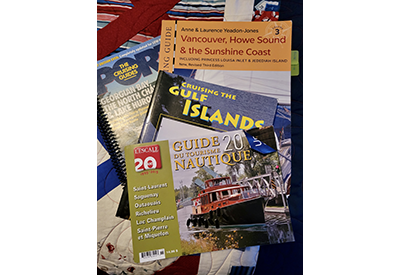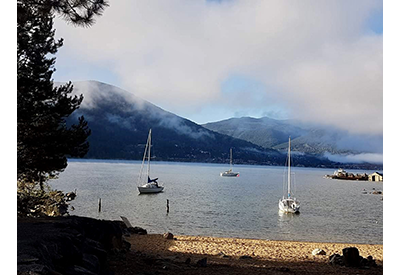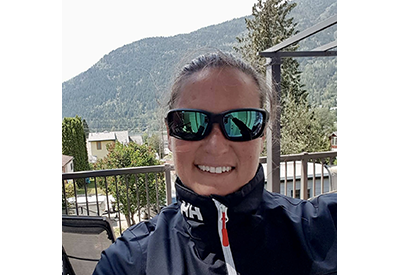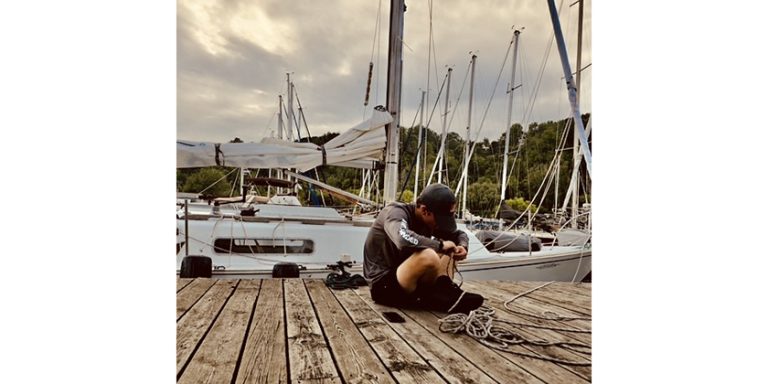The Power of Planning

Dec 21, 2021
 By Penny Caldwell
By Penny Caldwell
Like many of you, I am itching to travel again… So, I will be heading to Croatia in September 2022 to join a flotilla! I am very excited to explore the islands, wineries, waterfalls, historic towns and much more. Even though I am part of a flotilla with a set itinerary, I still need to study my own passage plan as my crew and boat are my responsibility.
A thorough passage plan is key to a successful, and relaxing, trip! I know you have probably read about passage planning before, so I will not get down to the basics. Instead, I want to give you a sneak peak into some of my pro tips and tricks for effective, and thorough, passage planning.
Online Research
The first thing I do is I start exploring online and reaching out to my online community. Are there Facebook groups, Instagram pages, blog posts, chat forums, etc., that I can dig into to get a feel for the area? Local knowledge is invaluable as many times charts, and even Navionics, may not be up to date on local tidal streams, shifting sandbars, etc. I cannot emphasize the importance of local knowledge enough! Do your research and invest several hours researching online and gather information from several sources.
Cruising Guides
Next, I have a look through the various cruising guides that are available for my destination. What are the ratings? When was the guide last updated? Is it recommended by others? Again, check your online forums or your own sailing contacts for feedback. Perhaps you have other cruising guides by the same author(s) and enjoy the information they provide. Whatever works. But again, a cruising guide will provide you with the local information charts and other government publications may not.
Charts
Once I have selected a cruising guide, I start selecting the charts I need, including the appropriate scale. Am I looking at an anchorage? If so, a large-scale chart is required (large scale = large amount of detail). If I am just transiting through an area, a small-scale chart will do. I often end up purchasing hard copy charts for an area. Call me old fashioned, but there is something satisfying and fun about sitting down and marking up a hard-copy chart!
Start Studying
Once I have my chart(s) in hand, I start to really dig into the details. By this, I mean that I start checking out the following on the chart: departure marina, anchorages, distances between, navigational aids along the route, alternative anchorages, and natural hazards. Then, if I will be sailing in a tidal area, I will download the tide and current tables for the dates that I will be in the area. Finally, I also check out historical weather patterns from the past few years as well as the weather patterns within the recent past to see if they are on trend or not. This process can take a couple of weeks to really study, but it is well worth it.
Pro Tip
Another study tip that I picked up from a sailing mentor, is sitting down and drawing out my anchorages. I know this sounds a bit tedious, but there is no better way to learn the contours of an area than to literally draw them out. It forces you to really pay attention to what you are looking at and you may notice details that you missed the first time you selected the anchorage. Once I have selected my anchorages, I spend some time (with a glass of wine of course) and I draw it all out. Then I get the kids involved, and they colour in my sketches. A family affair!
Take Photos
Another tip is to take photos of your charts for the areas where you plan to transit and anchor. Then you have handy photos on your phone which are easy to zoom in or out. This also cuts back on the number of times you are going in and out of the cabin to check your paper charts and helps to make sure your precious charts do not wander up into the cockpit where they may get wet or take their own sailing trip off the stern.
 I make notes; the kids colour!
I make notes; the kids colour!
Finally, I sit down and mark out my courses so I know headings, bearings, danger bearings, transits, etc. I will use navigational aids or land references as back bearings or transits to know when to alter course. Everything is plotted, labelled and ready for our trip! Sometimes I will go as far as estimating speeds (sometimes a little too fast!) and estimate ETAs.
Prepare Backup Plans
Most important, make sure you devise plans A, B and C, as you may need to alter your plans depending on sea state, weather, or even crew illness.
Taking the time to study and plan out your journey is a worthwhile investment of your time and attention. In the end, you will also have a book full of sketches of where you have been and possibly where you’d like to go next! Happy planning!
 About Penny Caldwell
About Penny Caldwell
Penny is the owner of Sail Nelson and has been an Advanced Cruising Instructor with Sail Canada since 2003. She also hosts a podcast called Your Pocket Sailing Instructor, and is currently completing her Navigation Instructor Certification.













